Nipple Vasospasm
Herzl Family Practice Centre, Goldfarb Breastfeeding Clinic Patient handout
Definition:
- When our blood vessels contract or become smaller in diameter, it is called “vasospasm”.
- Vasospasm can happen with exposure to cold or emotional stress, but in some people, it can be quite severe and cause pain.
- In some breastfeeding mothers, the blood vessels in the nipple can spasm, known as “nipple vasospasm”.
Risk factors for nipple vasospasm:
- Exposure to cold temperatures.
- Periods of severe emotional stress.
- Cigarette smoking or second-hand smoke.
- Poor latch or biting.
- Nipple cracks or trauma.
- Migraines.
- Certain medical conditions such as Lupus, rheumatoid arthritis, and hypothyroidism.
- Certain medications such as Fluconazole/Diflucan (treatment for thrush) and the birth control pill.
Nipple vasospasm may sometimes feel like a thrush infection of the nipple or breast. If you are prescribed Fluconazole/Diflucan for thrush, but your real problem is nipple vasospasm, this treatment may make your vasospasm worse.
How can I tell if I have nipple vasospasm?
- You may have mild to severe nipple/breast pain:
- The pain could be burning, throbbing, needle-like, deep, and/or numbing.
- The pain can last from seconds to hours, and come during or in between feeds.
- The pain may get worse when the nipples are exposed to cold, i.e. when you step outside in cold weather, or when you get out of a hot shower.
- When you are having the pain, your nipples will usually change color to pale/white, blue/purple, or dark red. These color changes are a sign that your blood vessels are contracting or spasming.
Things to try at home:
- First of all, make sure your baby has a good latch and that you have no pain while nursing.
- Heat is very important. Make sure you stay warm and protect your nipples at all times. When you are having the pain, you can put warm compresses, or the palm of your hand on the nipple for immediate relief.
- Staying active with some aerobic exercise may help.
- Avoid cigarette smoking and second-hand smoke.
- Decrease caffeine use.
It is important to seek professional help as soon as possible if this problem is continuing despite your efforts.
Treatments for nipple vasospasm:
- The use of Advil™ or Motrin™ (ibuprofen) and/or Tylenol™ (acetaminophen) may be very useful to treat the pain of nipple vasospasm. These medications are safe during breastfeeding.
- Your health professional may suggest high doses of calcium (1000 mg twice a day), magnesium (500 mg twice a day) and vitamin B6 (150-200 mg daily for 4 days, then 25-50 mg a day).
- Omega fatty acids may also help. Evening primrose oil (up to 12 capsules a day) and fish oil capsules are rich sources of omega fatty acids.
- Nifedipine (Adalat™), which are normally used for high blood pressure, can also be used for nipple vasospasm, and is safe for breastfeeding mothers and infants.
- Usually they is prescribed for a 2-week period, and this may be enough to get rid of the nipple pain. However, some mothers have to take them for longer times.
- Your blood pressure will usually be checked by your physician before Nifedipine is prescribed to you, because this medication may lower your blood pressure.
- If you have any side effects like dizziness, feeling faint, headache, palpitations, flushing or leg swelling, you should stop the medication and contact your physician as soon as possible.
The information contained in this patient handout is a suggestion only, and is not a substitute for consultation with a health professional or lactation specialist. This handout is the property of the author(s) and the Goldfarb Breastfeeding Clinic. No part of this handout can be changed or modified without permission from the author and the Goldfarb Breastfeeding Clinic. This handout may be copied and distributed without further permission on the condition that it is not used in any context in which the International Code for the Marketing of Breastmilk Substitutes is violated. For more information, please contact the Goldfarb Breastfeeding Clinic, Herzl Family Practice Centre, SMBD Jewish General Hospital, Montreal, Quebec, Canada. © 2009
